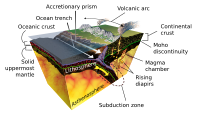
Growing sweet sorghum (Sorghum bicolor [L.] moench) in clumps potentially reduces lodging in the arid-southwestern United States
Sign Up to like & getrecommendations! Published in 2017 at "Industrial Crops and Products"
DOI: 10.1016/j.indcrop.2017.05.064
Abstract: Abstract Sweet sorghum (Sorghum bicolor [L.] Moench) is an attractive crop for the biofuel industry in the arid-southwestern United States due to its high yields of fermentable juice as well as fibrous biomass, with lower… read more here.
Keywords: arid southwestern; sweet sorghum; united states; sorghum sorghum ... See more keywords

Integrating studies of anatomy, physiology and behavior into conservation strategies for the imperiled cyprinid fishes of the Southwestern United States.
Sign Up to like & getrecommendations! Published in 2020 at "Integrative and comparative biology"
DOI: 10.1093/icb/icaa031
Abstract: Over the last 100 years fishes native to the Southwestern United States have faced a myriad of biotic and abiotic pressures which has resulted in most being federally listed as endangered or threatened. Most notably,… read more here.
Keywords: physiology behavior; anatomy; physiology; native fishes ... See more keywords

Population genomic analysis suggests strong influence of river network on spatial distribution of genetic variation in invasive saltcedar across the southwestern United States
Sign Up to like & getrecommendations! Published in 2018 at "Molecular Ecology"
DOI: 10.1111/mec.14468
Abstract: Understanding the complex influences of landscape and anthropogenic elements that shape the population genetic structure of invasive species provides insight into patterns of colonization and spread. The application of landscape genomics techniques to these questions… read more here.
Keywords: saltcedar; river; united states; genetic variation ... See more keywords

Long-term trends in restoration and associated land treatments in the southwestern United States
Sign Up to like & getrecommendations! Published in 2018 at "Restoration Ecology"
DOI: 10.1111/rec.12574
Abstract: Restoration treatments, such as revegetation with seeding or invasive species removal, have been applied on U.S. public lands for decades. Temporal trends in these management actions have not been extensively summarized previously, particularly in the… read more here.
Keywords: trends restoration; long term; restoration; united states ... See more keywords

Redefining the age of the lower Colorado River, southwestern United States
Sign Up to like & getrecommendations! Published in 2021 at "Geology"
DOI: 10.1130/g48080.1
Abstract: Sanidine dating and magnetostratigraphy constrain the timing of integration of the lower Colorado River (southwestern United States and northern Mexico) with the evolving Gulf of California. The Colorado River arrived at Cottonwood Valley (Nevada and… read more here.
Keywords: river; river southwestern; lower colorado; southwestern united ... See more keywords

Skarn fluid sources as indicators of timing of Cordilleran arc emergence and paleogeography in the southwestern United States
Sign Up to like & getrecommendations! Published in 2021 at "Geology"
DOI: 10.1130/g49005.1
Abstract: Oxygen isotope ratios of garnet provide well-established means to investigate crustal fluid histories. Traditionally, δ18O values from skarn garnets have been used to track the hydrothermal evolution of an individual skarn body through time. We,… read more here.
Keywords: arc; arc emergence; united states; garnet ... See more keywords

Tree Irrigation Requirements in the Semiarid Southwestern United States
Sign Up to like & getrecommendations! Published in 2018 at "Horttechnology"
DOI: 10.21273/horttech04045-18
Abstract: Several large cities in the southwestern United States have set a target to increase their tree canopy cover up to 25%, which often requiresmore than doubling the current canopy cover. Amajor goal is to alleviate… read more here.
Keywords: irrigation; irrigation requirements; requirements semiarid; united states ... See more keywords

A Southwestern United States Pilot Investigation of Triatomine–Mite Prevalence
Sign Up to like & getrecommendations! Published in 2021 at "Insects"
DOI: 10.3390/insects12090811
Abstract: Simple Summary An estimated 70 million persons in the Western Hemisphere are living at risk for Chagas disease, a parasitic infection transmitted to humans by over 156 different competent triatomine insect vector species. Prior Pan… read more here.
Keywords: triatomine; investigation; southwestern united; united states ... See more keywords

A new Stamnodes from the southwestern United States (Lepidoptera, Geometridae, Larentiinae)
Sign Up to like & getrecommendations! Published in 2020 at "ZooKeys"
DOI: 10.3897/zookeys.923.48290
Abstract: Abstract Stamnodes fergusonisp. nov. occurs from extreme southeastern Arizona through southern New Mexico east into western Texas, USA. Identity of the new species can be reliably determined by external features, genitalic characters, and COI haplotypes.… read more here.
Keywords: new stamnodes; stamnodes southwestern; states lepidoptera; united states ... See more keywords

Natal Dispersal Distance of Golden Eagles in the Southwestern United States
Sign Up to like & getrecommendations! Published in 2018 at "Journal of Fish and Wildlife Management"
DOI: 10.3996/052018-jfwm-039
Abstract: Data on natal dispersal distances (NDDs) of golden eagle Aquila chrysaetos in North America are needed to define local area populations and inform decisions authorizing take (i.e., injury, death, or disturbance) of the species via… read more here.
Keywords: golden eagles; natal dispersal; golden eagle; united states ... See more keywords